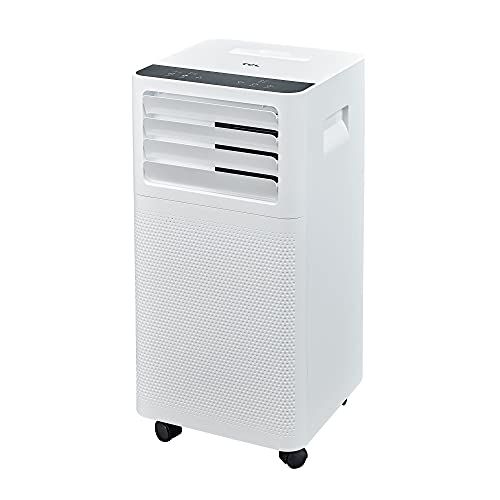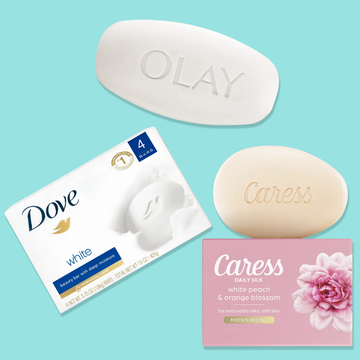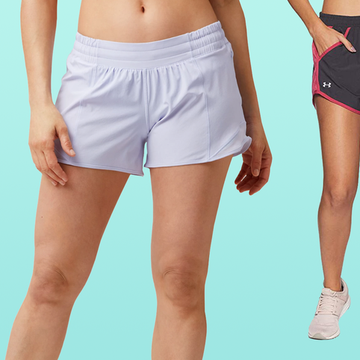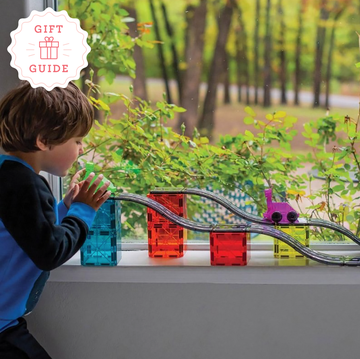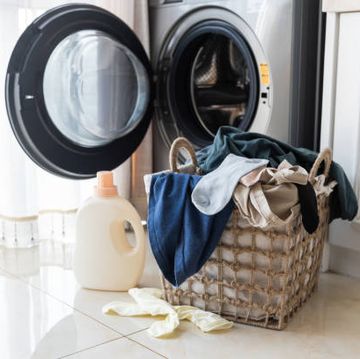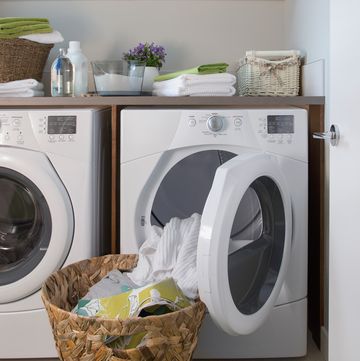8 Best Portable Air Conditioners of 2024, Tested by Experts
These top-performing ACs bring the cool to any room in the house.
We've been independently researching and testing products for over 120 years. If you buy through our links, we may earn a commission. Learn more about our review process.
Our top picks:
A portable air conditioner is just what it sounds like — a mobile device that delivers cool air where and when you need it most. These ACs are much cheaper than whole-house central air systems and they don’t need to be parked on a window sill, like a traditional room air conditioner.
For this report, the home improvement pros at the Good Housekeeping Institute reviewed and tested more than 30 portable air conditioners. Though central and room ACs still deliver top cooling power, the best portable ACs from our tests can maintain a comfortable 72º F during sultry weather (especially when paired with one of our top-rated ceiling fans) and they’re simple to set up and operate.
After our top picks, you’ll find more details on how we test portable air conditioners as well as buying tips to consider when shopping for the best unit for your home. Don’t miss our other round-ups of top home comfort products, including the best smart air conditioners, room fans and dehumidifiers.
Whynter Dual Hose Portable Air Conditioner


Whynter Dual Hose Portable Air Conditioner
Pros
Provides powerful cooling over large areas
Can also operate as a heater and dehumidifier
Relatively quiet
Cons
Slightly slower cooling than other models
Boasting an impressive 14,000 BTUs, this powerful yet relatively quiet portable AC from Whynter performed capably across our tough performance tests. You'll pay more for its dual-hose design, but that helps it condition spaces effectively and efficiently (though it cooled slightly slower than other dual-hose models in this round-up).
The Whynter's versatility is what makes it our top pick for most shoppers. For starters, it doubles as a dehumidifier, helpful since high indoor humidity often goes hand-in-hand with soaring temperatures. "In dehumidifier mode, the AC removed up to 101 pints of moisture in a 24-hour period," said Alec Scherma, test engineer at the Good Housekeeping Institute, where he reviews a slew of devices related to home comfort.
This newly upgraded model of the Whynter, which packs up to 600 square feet of cooling power and dehumidification, also includes a heater that can take interior temperatures up to a cozy 78°F and hold them there.
Testers like the programmable timer that lets you set a schedule for the day, for example, programming the AC to turn on 30 minutes before you'll be home from work. Other user-friendly features include a digital display that makes it easy to monitor temperatures. The 5-foot-long exhaust hose gives you some flexibility in terms of placement within a room.
Finally, the storage bag is another nice convenience if you do need to stow the unit away during the off season — though don't be surprised if you end up putting the top-scoring Whynter to work all year long.
| BTU | 14,000 ASHRAE (9,500 SACC) |
|---|---|
| Exhaust type | Dual hose |
| Cooling area | 500 sq. ft. |
| Weight | 80 lbs |
| Dimensions | 16" x 19" x 35.5" |
Pros
Powerful air flow
Cools extremely fast
Remote or app connectivity
Cons
Can be loud on max fan settings
What sets this portable AC apart from the competition is the pinpoint temperature control. In our demanding precision temperature tests, we set the machine to 64º F and returned to measure the room a short time later to find it at 65.6º F. No other portable AC came as close to achieving near-perfect temperature control as this one from TCL.
The air coming from this AC also came out faster and reached farther than other tested models, though the tradeoff is some expected noisiness, particularly on max fan settings. Our experts also like the Wi-Fi connectivity, allowing you to control the unit via a smartphone app. If you don't feel like downloading the app, it also comes with a remote.
Looking to cool down larger spaces? Our experts say this model's brand mate, the TCL 10,000, will perform comparably up to 350 square feet while offering the same bevy of convenience features.
| BTU | 5,000 BTU |
|---|---|
| Exhaust type | Single hose |
| Cooling area | Up to 200 sq. ft. |
| Weight | 49 lbs |
| Dimensions | 12.60" x 12.60i" x 26.38" |
EcoFlow Wave 2 Portable Air Conditioner


EcoFlow Wave 2 Portable Air Conditioner
Pros
Works as a cooler or a heater
Battery backup means you can take it on the road
Cons
Cooling output is on the lower end
EcoFlow’s Wave 2 was a winner in Good Housekeeping's Home Reno Awards based on the strength of its innovative design, which combines cooling and heating capabilities in a single machine. It also includes a battery pack that can be charged at an AC outlet, DC car charger or solar panel, so it can deliver up to eight hours of off-the-grid comfort, say, on a camping trip or during a power outage. “We really like this combo unit for homeowners who live in four-season climates and need portable AC during the summer months and a space heater come winter,” said Scherma.
During initial Lab tests, our engineers were impressed by the innovative mechanics of the two-in-one unit, though they noted that its 5,100 BTU cooling capacity is on the lower end of the spectrum for portable ACs; the output translates into a relatively small 107-square-foot cooling area.
GH editor Jacqueline Saguin tested the multitasker in cooling mode in her Brooklyn, NY home. Set-up was straightforward and the controls were intuitive. "Right after installation, it immediately went to work quickly and effectively cooling down my space," she said. One other caveat she noted: The dual-hose design took up extra space in her small studio apartment.
| BTU | 5,100 BTU |
|---|---|
| Exhaust type | Dual hose |
| Cooling area | 107 sq. ft. |
| Weight | 32 lbs |
| Dimensions | 13" x 12" x 20" |
Honeywell Portable Evaporative Cooler with Fan

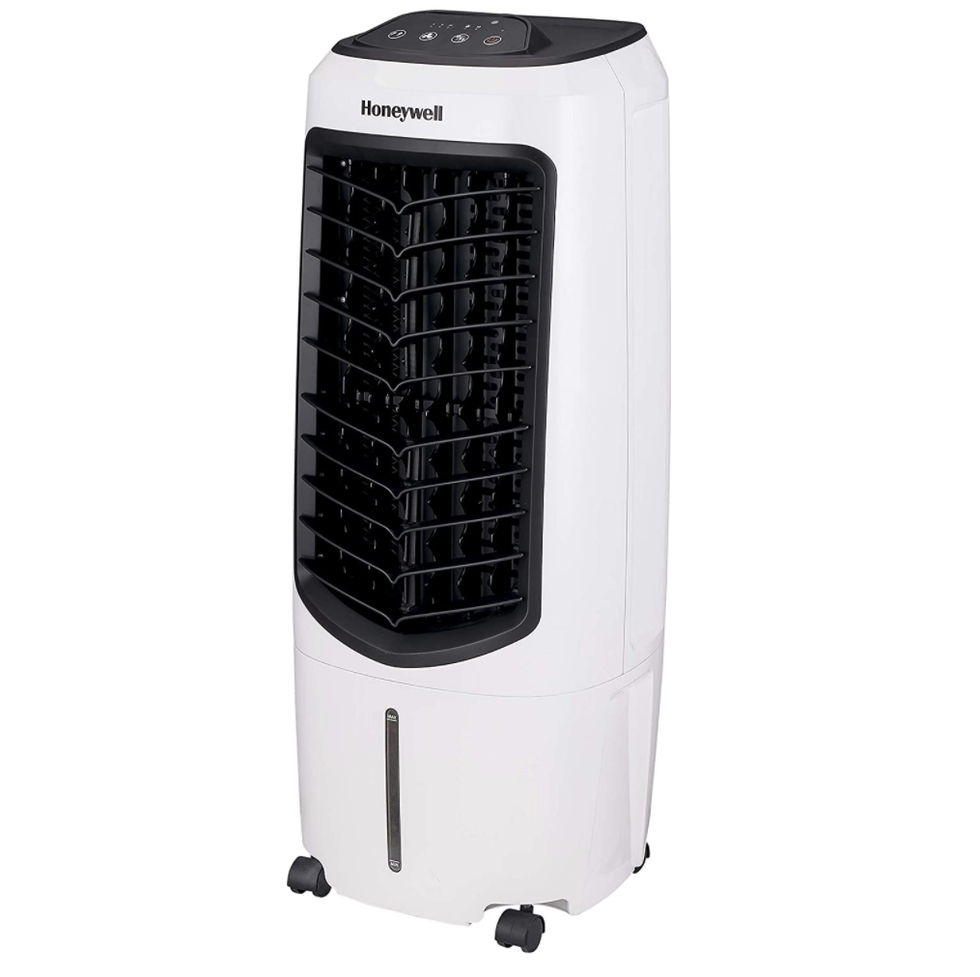
Honeywell Portable Evaporative Cooler with Fan
Pros
Moderately priced
Space-saving tower design
Energy efficient
Cons
Not as much cooling power as other models
This inexpensive evaporative air cooler is ideal for dryer climates, where relative humidity stays under 45%. "You'll get more of a cool breeze than an intense blast of cold air, but it's a solid affordable option for a room that needs a slight chill," said Scherma.
Because the Honeywell cools the air by the evaporation of water, it doesn't need to be vented to a window to work, so you have more flexibility in choosing where to place it. The compact tower design would work well in a small bedroom or office where space may be an issue. It weighs just 11.2 pounds, making it easier to move around than traditional portable ACs, which generally start at around 50 pounds.
The remote enables you to control the unit from your bed or the couch. Plus, this high-efficiency cooler pulls less power than other options in this round-up, so you could have a few running at the same time and still use less energy than a single portable AC.
| BTU | N/A |
|---|---|
| Exhaust type | N/A |
| Cooling area | 120 sq. ft. |
| Weight | 11.2 lbs |
| Dimensions | 11.6'' x 11.5'' x 29.6'' |
BLACK+DECKER BPACT08WT Portable Air Conditioner
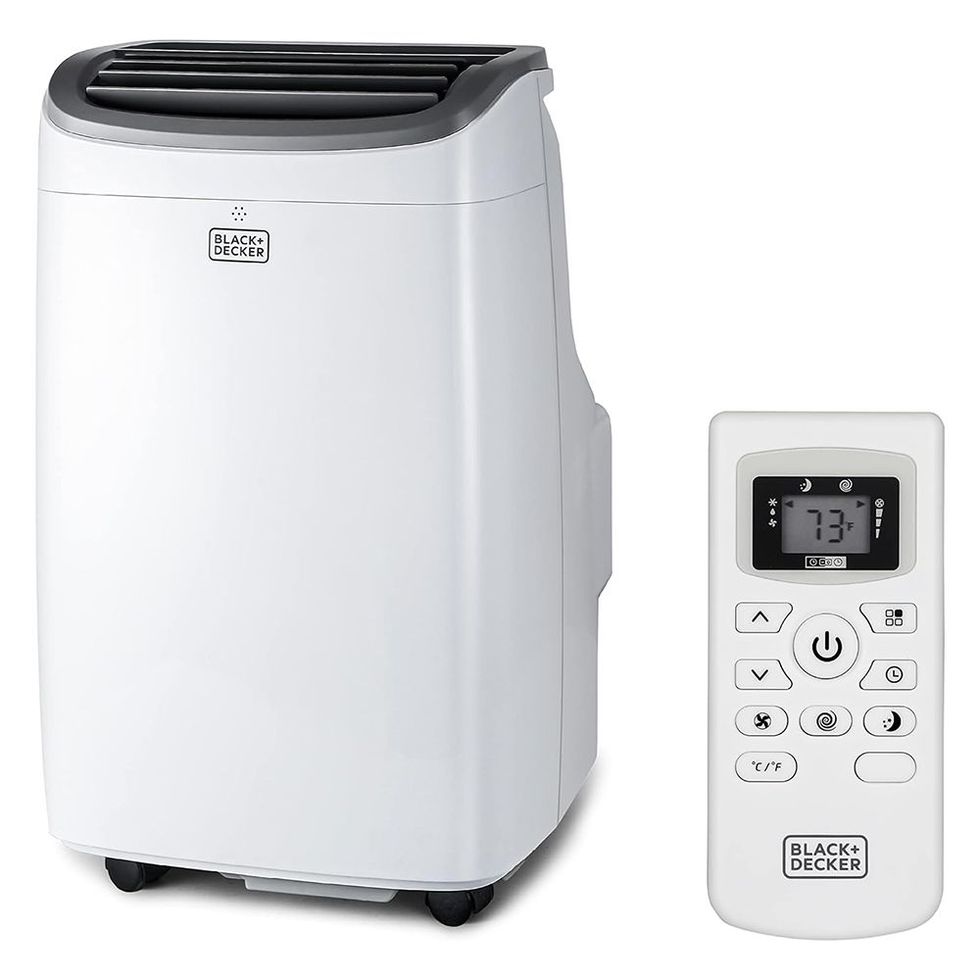
BLACK+DECKER BPACT08WT Portable Air Conditioner
Pros
On the quieter side
Easy to clean and maintain
Relatively lightweight
Cons
Weaker fan circulates air slowly
Our experts like this 8,000-BTU unit for cooling a bedroom or studio apartment. It's quieter than other portable air conditioners, and at 53 pounds, relatively easy to move around. However, the quiet operation and compact design come at the cost of less cooling power. And the single-hose exhaust system will really start to struggle in rooms that are larger than 350 square feet.
The well-priced portable AC has many features our experts look for, including a remote control for easy operation and a washable air filter that slides out the back of the unit for easy cleaning.
| BTU | 8,000 ASHRAE (4,000 SACC) |
|---|---|
| Exhaust type | Single hose |
| Cooling area | 350 sq. ft. |
| Weight | 52.9 lbs |
| Dimensions | 15.3” x 14” x 24.8” |
DeLonghi PAC-UV Portable Air Conditioner

DeLonghi PAC-UV Portable Air Conditioner
Pros
Superb cooling power
Optional quiet mode
Washable filter screen
Cons
Consumes more energy than other picks
If you need to cool down an extra-large space, like a great room or big studio apartment, the 14,000-BTU DeLonghi is a solid choice, with its chart-topping 700-square-foot cooling capacity. Like all portable ACs, it makes some noise at full power, but the quiet-mode setting cuts the clamor in half, making it good for bedrooms. In fact, during our testing, our experts determined this to be one of the quieter ACs, even when it wasn't running on quiet mode.
Our pros also like the washable filter screen, which makes the unit a good fit for allergy sufferers. Keep in mind that this single-hose model uses slightly more energy than some of our other picks, per our energy consumption testing.
| BTU | 14,000 ASHRAE (6,800 SACC) |
|---|---|
| Exhaust type | Single hose |
| Cooling area | 700 sq. ft. |
| Weight | 83.3 lbs |
| Dimensions | 15.4" x 17.5" x 31.7" |
Whynter ARC-12SDH Portable Air Conditioner and Heater

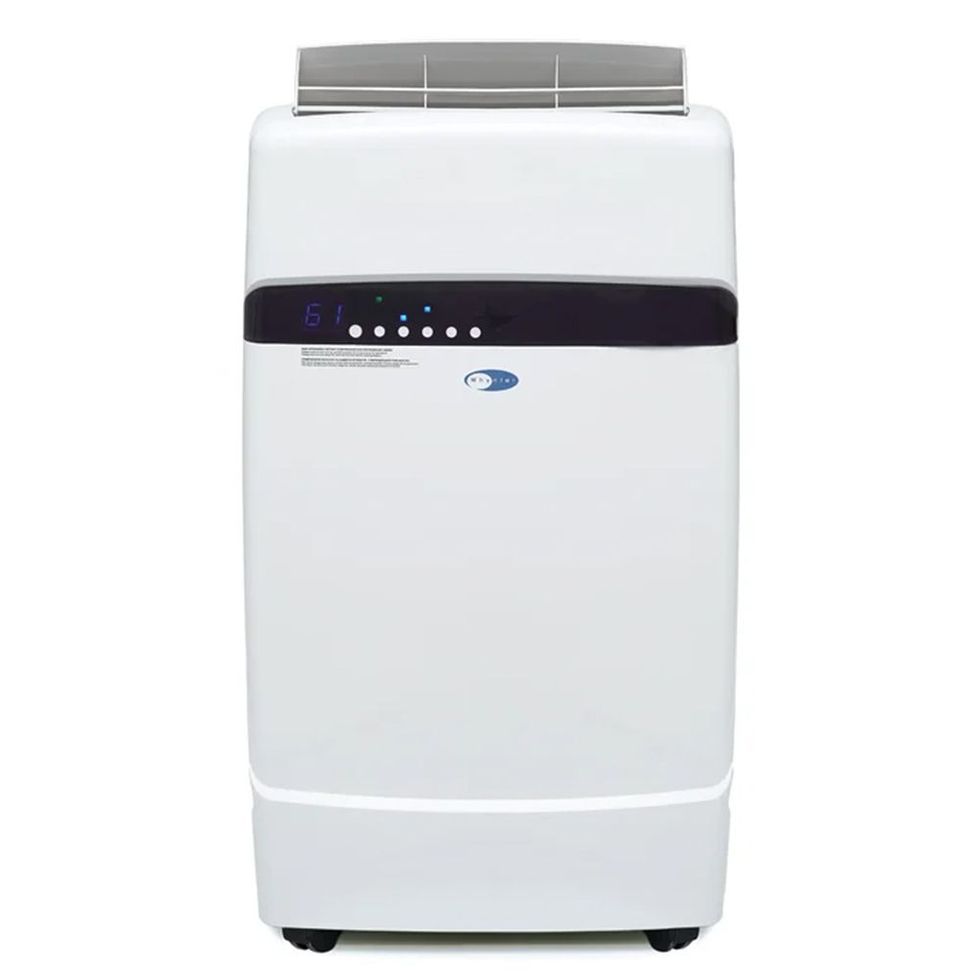
Whynter ARC-12SDH Portable Air Conditioner and Heater
Pros
Dehumidifier, fan, heater and cooler in one
Easy-to-read display
Programmable
Cons
Uses more energy than most tested models
This all-in-one cooler, dehumidifier, fan and heater will get you through the year with its multi-functionality. Whynter claims this unit can cool up to 400 square feet, and it can dehumidify up to 96 pints over 24 hours.
The two-hose operation helps it cool a room faster than single-hose portable ACs, and the front-facing read-out allows you to monitor the temperature with ease. You can program it for up to a 24-hour period. Like the other Whynter models we looked at for this report, it consumes more energy than competing portable ACs, but that's the tradeoff for its versatility and exceptional cooling power.
| BTU | 12,000 ASHRAE (7,900 SACC) |
|---|---|
| Exhaust type | Dual hose |
| Cooling area | 400 sq. ft. |
| Weight | 71 lbs |
| Dimensions | 20'' x 16.5'' x 34'' |
LG Smart Portable Air Conditioner
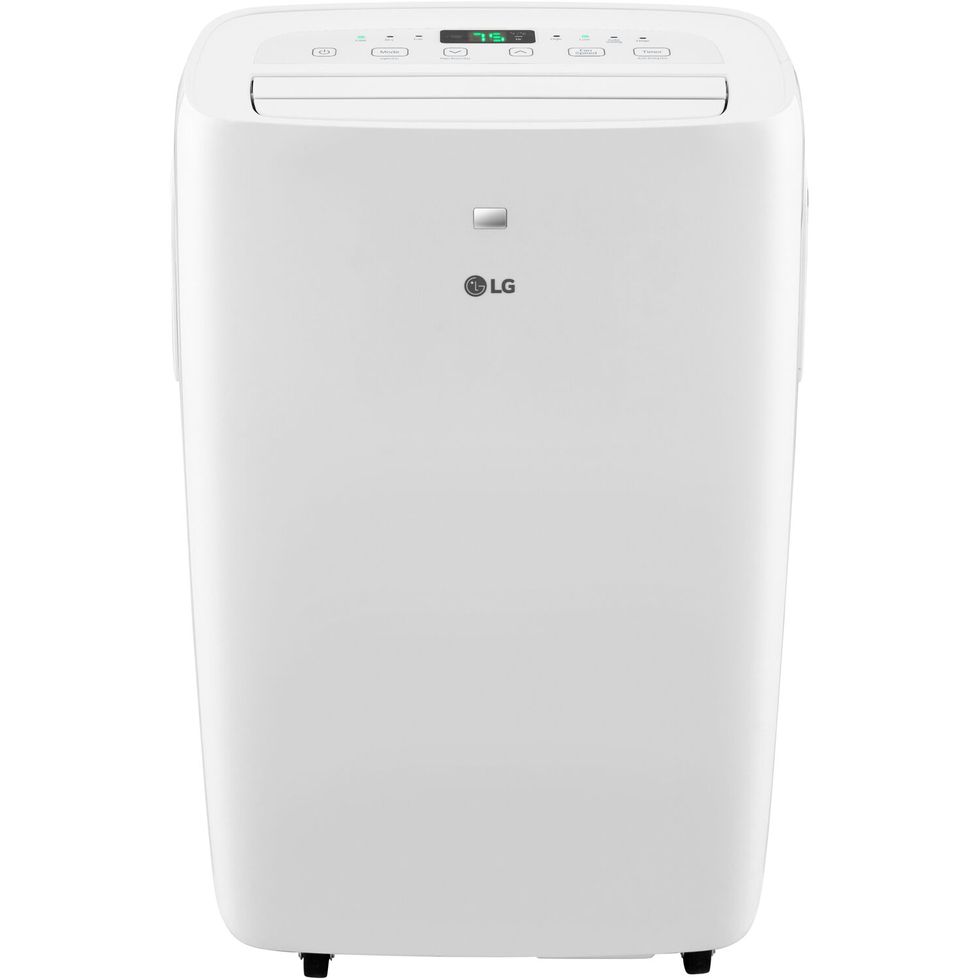
LG Smart Portable Air Conditioner
Pros
Clear, easy-to-use controls
Quiet operation
Works with Alexa and Google assistant
Cons
Can take a while to cool down a space
When our engineers tested LG's 8,000 BTU unit, we found it to be relatively quiet for its output and also easy to move from room to room, thanks to its lightweight design and easy rolling casters. It was able to produce some of the coolest temperatures out of all the units we tested, though there was considerable set-point deviation at five minutes during our cooling test, so expect it to take some time to equilibrate to your desired temperature.
LG is known for innovation and this portable AC lives up to the reputation. With the built-in Wi-Fi, you can start or stop your cooling remotely, handy for getting a room's temperature just right before you enter. You can also use voice control via Amazon Alexa or Google Assistant for hands-free operation.
Our experts like that you can set it to cool mode, fan mode or dry mode, making it easy to create the ideal environment based on what sort of day it is ( for example, muggy versus dry and hot). We also found the machine's controls to be clear and easy to use.
| BTU | 8,000 ASHRAE (6,000 DOE) |
|---|---|
| Exhaust type | Single hose |
| Cooling area | 250 sq. ft. |
| Weight | 54.2 lbs |
| Dimensions | 13.27" x 17.32" x 27.36" |
How we test portable air conditioners
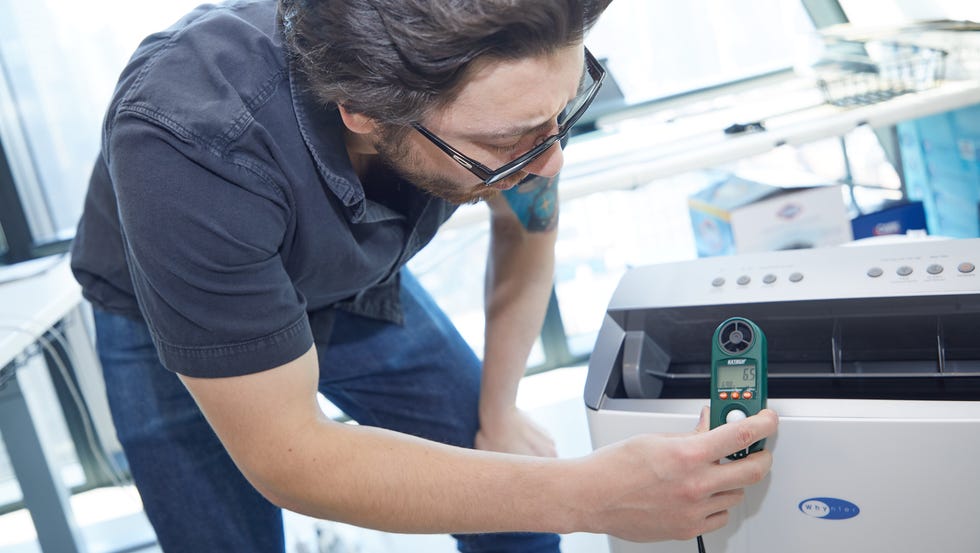
Our Good Housekeeping Institute product experts start by shopping the current marketplace to identify the top-selling portable ACs that you’re most likely to find at stores and online. Next, we identify brands that have performed the best and proven the most reliable through years of AC testing at the Good Housekeeping Institute. We also consider newer brands with unique features or innovations.
Hands-on evaluations mainly happened in our Home Improvement and Outdoor Lab, where our engineers and experts spent more than 100 hours testing and reviewing 30 new models and analyzing scores of technical data.
Performance testing covers multiple factors. We check to see how close the air temperature coming out of the AC is to our set point. Next, we measure air speed with an anemometer (pictured). This tells us how quickly the AC can cool a room.
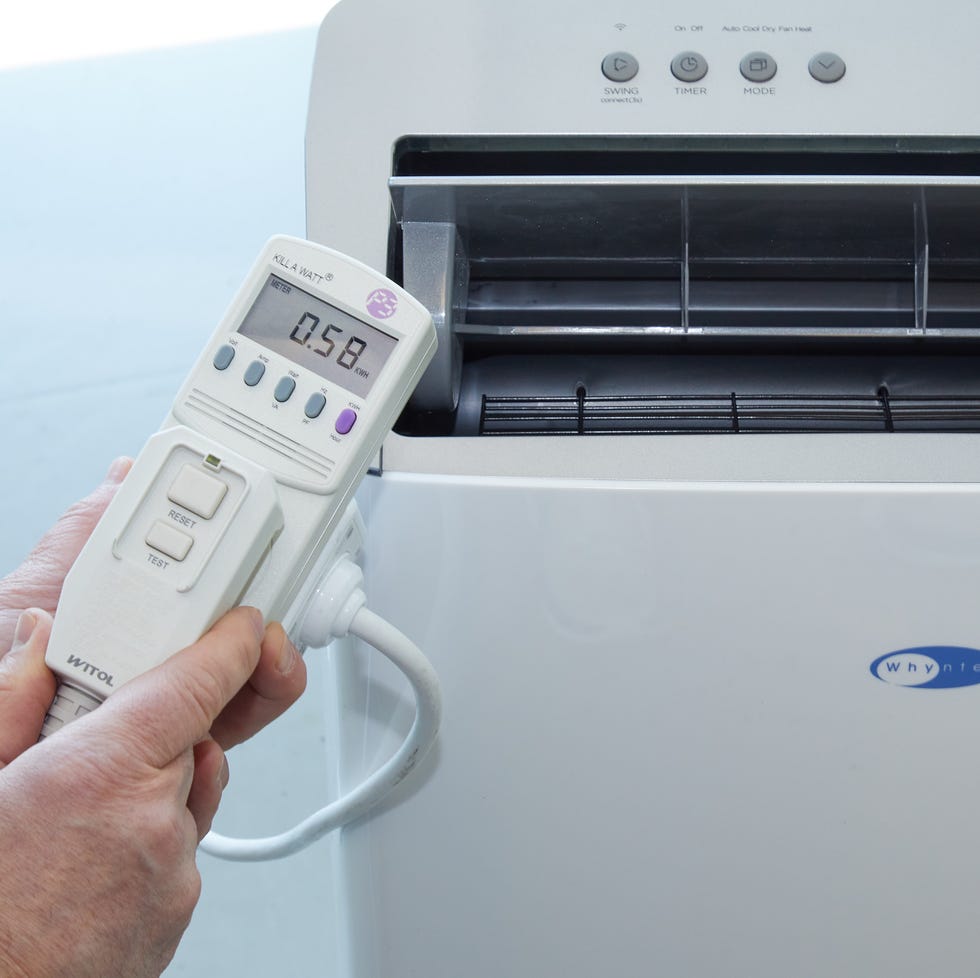
We then assess how much power each device consumed using a Kill-a-Watt electricity usage monitor (pictured). Knowing that portable ACs are often used in bedrooms, we check decibel ranges at various fan speeds using a sound meter.
We also tested some units at home over a six-week period to better evaluate them in real-world conditions. Our engineers consider a variety of factors, starting with ease of set-up. We take into account how intuitive the user manuals and other instructions are.
What type of portable air conditioner is best?

Portable ACs work by drawing in air, cooling it with the use of evaporative coils and exhausting the leftover heat through a tube that is typically vented through a window. There are two types of portable ACs that use this basic engineering: single-hose and dual-hose. The best choice for you will come down to a few factors. Here's what to know about each:
✔️ Single-hose portable AC: This is the most common type of portable air conditioner and also the least expensive. So if you're on a tight budget, it's your best bet. It features one exhaust hose which vents heat from the unit to the outside. Air to be cooled is pulled directly from the room.
This leads to the main drawback of single-hose ACs: They create negative pressure in the room, meaning hot air from outside or other unconditioned parts of the house will be drawn into the room through any openings, like cracks around windows and doors. This makes it harder for the AC to maintain consistent temperatures and the units also have to work harder, making them less energy efficient. For this reason, our experts say single-hose ACs are generally best for smaller spaces (200 square feet or less) where the heat and humidity doesn't get too extreme.
✔️ Dual-hose portable AC : As the name suggests, these units feature two hoses that usually connect to the same window — one to take air in and one to exhaust it. Using outside air to cool the system instead of air from the room eliminates the negative pressure issue.
That's why our experts say to go for a dual-hose unit if you need to cool a larger space that can get quite hot and humid. It will be more effective at keeping the room cool and it will use less energy in the process, since the motor won't have to work as hard. The downside is you'll have to spend considerably more for a dual-hose portable AC, as much as $300 more based on current prices.
What about evaporative coolers (EC)? We include these devices in this report because A) they are portable and B) they are designed to cool a space. But that's where the similarity between evaporative coolers and portable ACs ends.
ECs do not have exhaust or intake hoses. Instead, they use the process of evaporative cooling to cool a space. The only moving part is the internal fan that moves air across a water reservoir and cooling pads. As this happens, the water slowly evaporates, creating cooler air which is then expelled back into the room.
ECs produce more of a cool breeze than a blast of cold air; they're ideal in dry climates where humidity levels are low and the air is hot.
ECs use much less energy than any other AC type, as they do not have internal parts that do the cooling. Since they don't need to be exhausted, you can use ECs in any space, or even outside.
How many BTUs should a portable AC be?

Short for British Thermal Units, BTUs are a measure of air conditioner capacity that equates to a particular room size. Choosing the right capacity is essential: Too strong and you’ll waste unnecessary power, while a portable AC that is too weak won't cool effectively and, in the process, will waste energy by continuously running at full tilt. That's why the DOE recommends an average of 20 BTUs for each square foot of living space.
✔️ When to size down in BTUs: After you calculate BTUs based on room size, you might find that you're in between offered sizes. Our experts say it's better to opt for the smaller unit. Using too powerful of an AC can be detrimental to the cooling and the comfort of the room, as it won’t properly dehumidify the air as it cools. While you’ll have to run a smaller AC for longer, it will be more efficient, and the room will be more comfortable.
✔️ When to size up in BTUs: It's important to recognize that not all rooms are built the same. You’ll want to size up your AC if it is in a room with the following:
- High ceilings that create more space that needs to be cooled
- High traffic as more people means more heat generated
- Lots of sun (e.g. a room with a lot of south-facing windows)
- Near the kitchen with a lot of heat-generating appliances
A note on BTU measurements: Previously, BTUs were indicated with a measurement based on testing standards from the American Society of Heating, Refrigerating and Air Conditioning Engineers (ASHRAE). BTUs were measured based only on an ambient temperature of 80º F. And while this rating is still used to sell products, a more accurate BTU rating is the newer scale known as Seasonal Adjusted Cooling Capacity (SACC), a recent standard introduced by the Department of Energy (DOE).
SACC is a rating of BTU per hour that is meant to portray the capabilities of the machine more accurately by providing a weighted average based on a variety of test conditions, not just an average use case. (Think: a combination of normal usage, a muggy day, a particularly hot or dry day, etc.)
New SACC ratings will show lower maximum BTUs than previous ratings. So an AC that previously had a 14,000 BTU ASHRAE rating may now have a SACC rating closer to 10,000 BTU to more accurately reflect cooling in a range of conditions.
Are portable air conditioners as good as window units?

Short answer: no. Window ACs cool more effectively and efficiently than portable units, because their heat-generating mechanical parts are located outside of the room that's being cooled. Here are other pros and cons to weigh when choosing between the two types:
- Portable ACs are easier to move. They're on wheels after all. Window ACs need to be properly secured, held in place and connected to the window (some even require you to drill into the frame).
- Portable ACs fit more window types. Another benefit of a portable AC's exhaust hose is that it allows the unit to connect to different window types. While window ACs only work with vertical double-hung windows, portable ACs work with horizontal sliding windows as well. Portable ACs can also work with smaller window types that may not fit a window unit.
- Portable ACs are noisier and heavier than window ACs. Portable units tend to be louder, since all their mechanicals are sitting right there in the room, instead of out the window. They can also be larger than their counterparts, weighing up to 80 pounds.
- Portable ACs take up more square footage than window ACs. Because they sit inside the room they cool, portable ACs unit take up more floor space. Our experts recommend placing the unit away from walls so the airflow isn’t restricted, but that will likely mean a longer hose and more space taken up. For proper efficiency, make sure the exhaust hose is as straight as possible, since kinks can limit its effectiveness.
Do portable ACs have to be vented out a window?

Standard portable ACs must be vented out a window to exhaust the hot air they produce. You can also choose to vent through a wall or ceiling — anything that will send the hot air to another space. The machines don't produce toxic fumes, like carbon monoxide, so the venting is about cooling performance, not safety.
However, evaporative coolers don't need to be vented. These units require a large amount of water or ice to cool the space.
Why trust Good Housekeeping?

For many decades, the Good Housekeeping Institute has provided expert reviews and advice on all things home-related, including portable air conditioners and other HVAC equipment. This project was spearheaded by Alec Scherma, test engineer at the Institute. Scherma's background in mechanical engineering and HVAC consulting provides testing expertise and knowledge on the different types of HVAC equipment one can purchase.
Scherma worked closely with Dan DiClerico, director of the Home Improvement & Outdoor Lab. DiClerico brings more than 20 years of experience to the Institute, having reviewed thousands of home-comfort products, including room air conditioners, air purifiers, space heaters, humidifiers, dehumidifiers and more.
Having written thousands of product reviews and how-to articles on all aspects of home ownership, from routine maintenance to major renovations, Dan (he/him) brings more than 20 years of industry experience to his role as the director of the Home Improvement & Outdoor Lab at the Good Housekeeping Institute. A one-time roofer and a serial remodeler, Dan can often be found keeping house at his restored Brooklyn brownstone, where he lives with his wife and kids.
Alec Scherma (he/him) is the Good Housekeeping Institute’s test engineer, where he helps to create and implement new product testing methodology across home, cooking and cleaning appliances, wellness, tech products and more. He graduated from Drexel University’s College of Engineering with a B.A. in mechanical engineering.
Watch Next


Everything You Need to Know About Makeup for Men

Wonderskin Wonder Blading Lip Stain Masque Review

The 15 Best Edge Control Products

The Best Mattress for Sex

